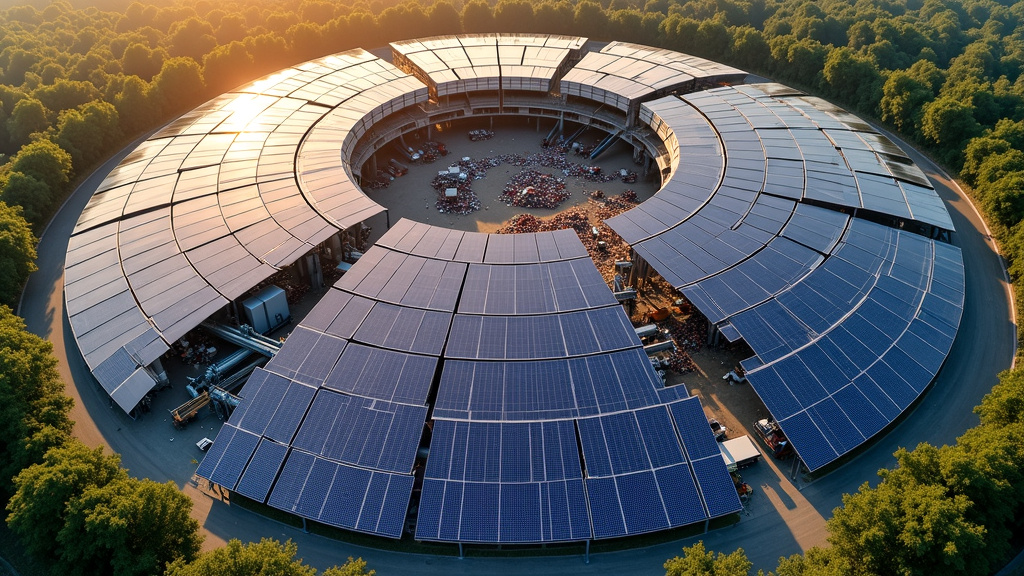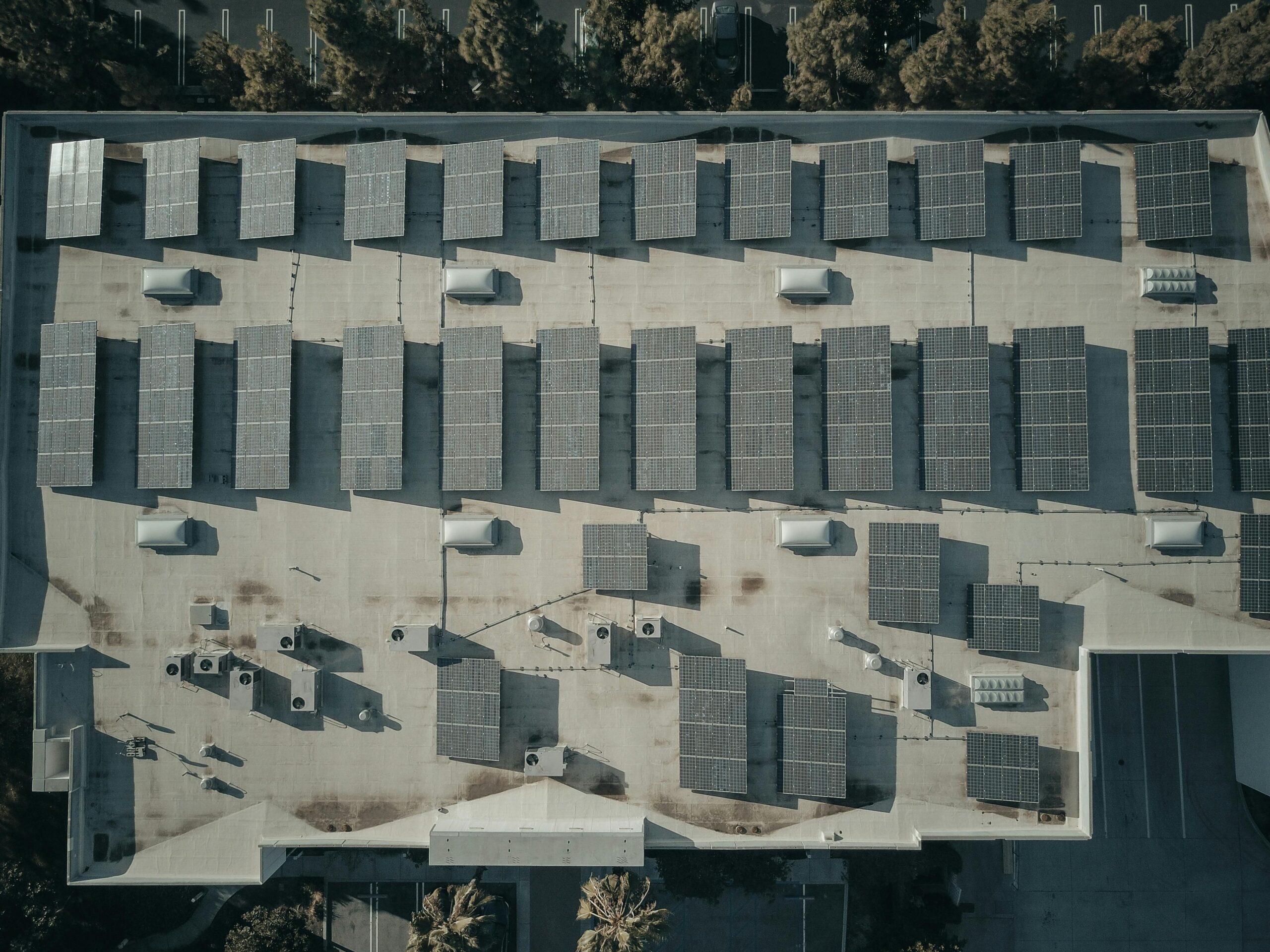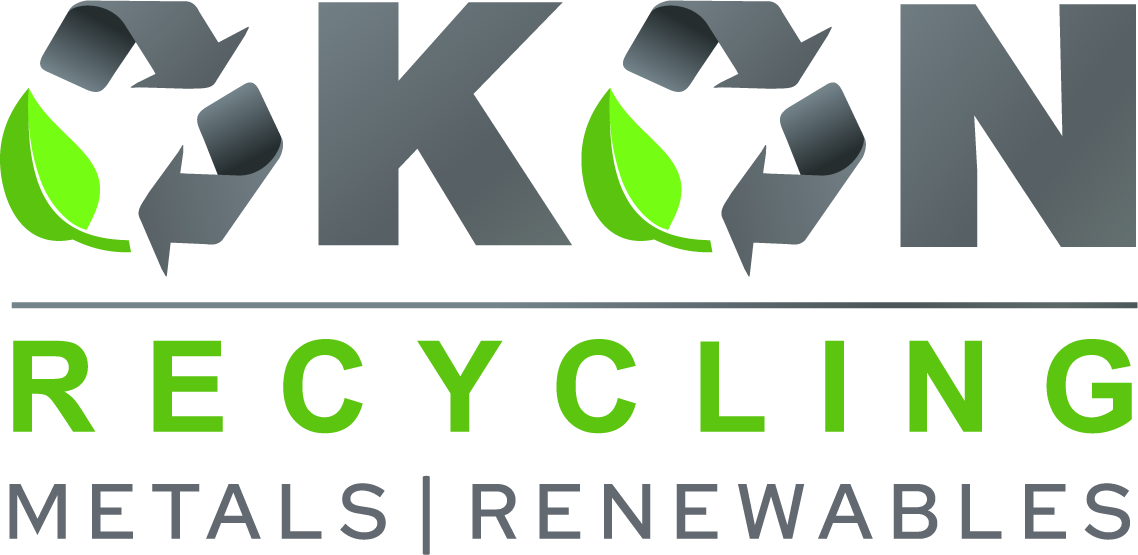5901 Botham Jean Blvd, Dallas, TX 75215
Solar Panel Recycling Cost: Key Insights
February 14, 2025By 2050, the world could face 78 million tons of solar panel waste, underscoring the urgent need for efficient recycling solutions. Companies like Okon Recycling are stepping up to tackle this challenge, offering innovative methods to recover valuable materials and minimize environmental impact.
Solar panels, essential for clean energy, have a lifespan of 25 to 30 years. But what happens when they reach the end of their cycle? Recycling not only prevents landfill waste but also reclaims critical materials like aluminum, copper, and silicon, reducing the demand for new raw materials and lowering the carbon footprint of solar energy production.
The cost of recycling a solar panel ranges from $10 to $40 per unit, depending on factors like panel type and recycling facility location. Understanding these costs is crucial for industry stakeholders as solar adoption continues to grow.
As we explore solar panel recycling, we’ll examine the processes, cost considerations, and cutting-edge solutions shaping the future of sustainable solar energy. Okon Recycling is leading the way—discover how they’re making solar waste disposal more efficient and eco-friendly.
Key Factors Influencing Solar Panel Recycling Costs

Recycling solar panels involves a complex interplay of factors that significantly impact overall costs. As the solar industry expands, understanding these cost drivers is crucial for developing sustainable end-of-life solutions for photovoltaic modules.
Logistics and Transportation
Logistics is a primary cost factor in solar panel recycling. The geographic distribution of decommissioned panels and their distance from recycling facilities can significantly affect expenses. According to industry data, transportation costs range from $1,000 to $2,000 per container, with each container holding 300 to 500 panels.
Collection costs also play a significant role, varying from $0.05 to $0.25 per watt depending on factors like site accessibility and the number of panels processed. For large-scale operations, optimizing transportation networks is key to reducing costs and improving overall recycling efficiency.
Establishing comprehensive collection infrastructure is particularly challenging for small-scale recycling operations. Many facilities require minimum waste volumes of 4,000 tons annually to remain profitable, creating barriers for individual homeowners and small businesses seeking recycling solutions.
Technological Advancements and Processing Methods
The technology used in solar panel recycling significantly influences both costs and material recovery rates. Current methods fall into three main categories: mechanical, thermal, and chemical processes, each with its own advantages and limitations.
Mechanical recycling, while generally safer and more cost-effective, struggles with separating bonded materials. Advanced thermal and chemical processes can achieve higher recovery rates, especially for valuable materials like silicon and silver, but often at increased costs.
Innovative technologies are emerging to address these challenges. For example, researchers have developed base-activated persulfate and ammonia solutions that can recover over 90% of silver within 10 minutes, potentially reducing processing costs and improving material yields.
Panel Composition and Material Recovery
The composition of solar panels directly affects recycling costs and the value of recovered materials. Crystalline silicon panels, which constitute about 90% of the market, require specific extraction methods due to their complex structure. The presence of materials like silver (0.1% of panel mass) and copper (1% of panel mass) demands sophisticated recovery techniques.
Glass, comprising 70-75% of a panel’s weight, presents its own recycling challenges. While high recovery rates are achievable, meeting the stringent purity requirements for new solar panel production can be difficult. As a result, recycled glass often ends up in less demanding applications, potentially reducing its value.
Current estimates place solar panel recycling costs between $20 to $30 per panel, significantly higher than the $1 to $5 cost of landfill disposal. However, as recycling technologies improve and economies of scale are achieved, these costs are expected to decrease, making recycling a more economically viable option.
The solar panel recycling landscape is rapidly evolving, with initiatives like the Photorama consortium aiming to recover more than 98% of panel mass with 98% purity. As the industry continues to innovate, more efficient and cost-effective recycling solutions are expected to emerge, paving the way for a truly circular economy in solar energy.
For more information on the latest advancements in solar panel recycling technologies, visit the Science Direct article on next-generation reverse logistics networks for photovoltaic recycling.
| Recycling Method | Average Cost per Ton (USD) | Recovery Rate (%) |
| Curbside Recycling | Varies by city, $30 less than waste disposal | Varies, high recovery in areas with high diversion rates |
| Source-Separated Recycling | Approximately $35-$120 | High, especially for clean, separated materials |
| Thermal and Chemical Processes | Higher, due to advanced technology | Over 90% for specific materials like silver |
| Mechanical Recycling | Lower cost, but struggles with bonded materials | Lower recovery rate compared to chemical processes |
The Global Impact of Recycling Solar Panels on Sustainability

As the world increasingly adopts solar energy as a clean power source, the question of what happens to solar panels at the end of their lifecycle has become crucial. Recycling solar panels is vital to enhancing the sustainability of this technology. By reducing the need for new raw materials and minimizing environmental harm, solar panel recycling significantly contributes to a circular economy and helps reduce carbon footprints in the industry.
One of the primary benefits of recycling solar panels is conserving valuable resources. Solar panels contain materials like silicon, silver, and copper that can be recovered and reused in new panels or other products. According to the International Renewable Energy Agency (IRENA), the value of recoverable materials from solar panels could exceed $15 billion by 2050. This not only reduces the demand for virgin materials but also lessens the environmental impact associated with mining and processing these resources.
The concept of a circular economy is central to the sustainability benefits of solar panel recycling. Rather than following a linear ‘take-make-dispose’ model, recycling allows materials to be continuously reused, creating a closed-loop system. This approach reduces waste and creates new economic opportunities. For instance, companies like First Solar have implemented innovative recycling programs that can recover up to 90% of materials from their panels, demonstrating the potential for creating value from what would otherwise be waste.
Environmental Benefits and Carbon Footprint Reduction
Recycling solar panels offers substantial environmental benefits beyond material recovery. By reducing the need for new raw materials, it helps decrease carbon emissions associated with extracting and processing these resources. This is particularly significant given the energy-intensive nature of producing solar-grade silicon, the primary material in most photovoltaic cells.
Moreover, proper recycling prevents potentially harmful materials found in some solar panels, such as lead or cadmium, from entering landfills and potentially leaching into the environment. This is crucial for maintaining the green credentials of solar energy and ensuring its long-term sustainability.
The carbon footprint reduction achieved through solar panel recycling is noteworthy. A study by the National Renewable Energy Laboratory (NREL) found that recycling can significantly lower the overall lifecycle emissions of solar panels. By reusing materials, the energy required to produce new panels is substantially reduced, further enhancing the environmental benefits of solar power.
Supply Chain Resilience and Material Reuse
Recycling solar panels also strengthens the supply chain resilience of the solar industry. As the demand for solar panels grows, ensuring a stable supply of critical materials becomes increasingly important. Recycling offers a domestic source of these materials, reducing dependence on imports and potentially volatile global markets.
The reuse of materials from recycled solar panels can have far-reaching impacts beyond the solar industry. For example, recovered silicon can be used in producing electric vehicle batteries, creating synergies between different green technologies. This cross-sector material flow exemplifies the interconnected nature of a truly circular economy.
Successful recycling initiatives are already demonstrating the potential of this approach. In Europe, the PV Cycle program has been instrumental in establishing a comprehensive recycling infrastructure for solar panels. Since its inception, it has collected and processed thousands of tons of solar panel waste, achieving recycling rates of up to 96% for some panel types.
Overcoming Challenges in Solar Panel Recycling

As the solar energy industry grows, a critical challenge arises: effectively recycling solar panels at the end of their lifecycle. The complexity of solar panel composition and the lack of standardized recycling processes present significant hurdles. However, innovative solutions are on the horizon, promising to transform these challenges into opportunities for a more sustainable future.
The Infrastructure Gap
One primary obstacle in solar panel recycling is the lack of adequate infrastructure. Many regions lack the facilities or equipment necessary to handle the growing volume of decommissioned panels, leading to inefficient disposal methods that can release harmful materials into the environment.
To address this, governments and private sector entities are investing in specialized recycling centers. For instance, France aims to have 6 GW of annual solar panel recycling capacity by 2025, setting a benchmark for other nations. Such initiatives create jobs and ensure valuable materials are recovered and reused.
Developing a robust recycling infrastructure requires significant capital investment. To incentivize this development, policymakers are exploring financial mechanisms, including tax breaks for recycling facilities and grants for research and development in recycling technologies.
Standardization: A Key to Efficiency
The lack of standardization in solar panel design and composition complicates recycling. Different manufacturers use varying materials and construction methods, making it challenging to develop a universal recycling approach.
Industry leaders are now calling for universal design standards that prioritize recyclability, such as using easily separable components or standardizing materials used in panel construction. These changes would streamline the recycling process, making it more cost-effective and efficient.
Regulatory bodies are also stepping in to establish guidelines for solar panel recycling. For example, the European Union’s Waste Electrical and Electronic Equipment (WEEE) Directive now includes specific provisions for solar panel recycling, setting a precedent for global standards.
| Recycling Technique | Energy Efficiency (KJ/Kg) | CO₂ Emissions (Kg/Kg) | Cost ($/Kg) | Net Economic Benefit |
|---|---|---|---|---|
| Direct Recycling (Arr 1a) | 510–760 | 0.95–1.85 | High | |
| Hydrometallurgical Recycling (Arr 3a) | 1.9–3.6 | 39–64 | Greatest | |
| Pyrometallurgical Recycling (Arr 2b and 2c) | 420–1120 | 1.3–3.8 | Moderate |
Innovative Technologies Driving Progress
Technological innovation plays a crucial role in overcoming recycling challenges. Advanced robotics and artificial intelligence are automating the disassembly process, significantly reducing labor costs and improving efficiency.
Chemical recycling techniques are also evolving, allowing better separation and recovery of valuable materials like silver and silicon. These advancements make recycling more economically viable and increase the purity of recovered materials, enhancing their value in the circular economy.
Researchers are exploring novel approaches, such as using environmentally friendly solvents to dissolve and separate panel components. A study published in Nature Energy demonstrates a promising method for recovering high-purity silicon from end-of-life panels, potentially revolutionizing the recycling process.
Policy Changes and Economic Incentives
Effective policy frameworks are essential to drive the adoption of recycling practices. Governments worldwide are implementing extended producer responsibility (EPR) programs, requiring manufacturers to take responsibility for the entire lifecycle of their products, including end-of-life disposal.
Economic incentives are also being introduced to make recycling more attractive. These include tax credits for companies that use recycled materials in new panel production and subsidies for consumers who properly dispose of old panels through certified recycling programs.
Some regions are exploring innovative funding models, such as a small recycling fee included in the initial purchase price of solar panels. This approach ensures that funds are available for proper disposal and recycling when panels reach the end of their life.
The Path Forward
Overcoming the challenges in solar panel recycling requires a multifaceted approach combining technological innovation, policy reform, and economic incentives. As the industry evolves, collaboration between manufacturers, recyclers, policymakers, and researchers will be crucial in developing sustainable solutions.
By addressing these challenges head-on, we can ensure that solar energy remains a truly clean and sustainable power source throughout its entire lifecycle. The innovations and policies developed today will pave the way for a more circular and environmentally responsible solar industry in the future.
Conclusion on Solar Panel Recycling’s Cost and Impact
Solar panel recycling is essential for building a truly sustainable renewable energy industry. As the sector advances, cutting-edge recycling technologies are making the process more efficient, cost-effective, and environmentally responsible. Okon Recycling leads the way, setting new standards for responsible solar waste management.
By recovering valuable materials like silicon, silver, and glass, recycling reduces waste, conserves resources, and supports a circular economy. As solar adoption grows, scaling up recycling efforts will be critical. Market projections show the value of recovered materials could reach billions of dollars by 2050, presenting significant economic opportunities.
Okon Recycling’s innovative processes achieve over 99% recyclability, handling thousands of panels monthly. Their commitment to refining recycling techniques and expanding their network is shaping the future of sustainable solar waste management.
The future of solar panel recycling is bright, but widespread adoption and investment are key. If you’re ready to contribute to a cleaner, more sustainable future, contact Okon Recycling today at 214-426-6566 to learn more about efficient solar panel recycling solutions.
